Freelance graphic designer Matt Bookman continues his account the story behind ROBOT, a BBC comic magazine project that, sadly, never flew. In Part Two, he reveals BBC Books Editor Steve Cole’s idea for bringing Doctor Who to the magazine originally called The Sci-Files – and the strips created by Garry Leach, David Pugh and Lee Sullivan…
• Read Part One of Matt’s two-part feature on The Sci-Files and ROBOT here
Discussion about my proposed The Sci-Files comic magazine for BBC Worldwide seemed to continue but the project never appeared to move forward, until a year after I had made my original pitch, I was introduced to Steve Cole, who was the editor of Doctor Who books.
Steve was friendly and enthusiastic. He agreed that the magazine was a good idea, and I felt I had gained the support of someone who would be very useful. He also had a blinder of a good idea…
He explained that Universal co-owned the Paul McGann version of the Doctor and every time BBC Worldwide published something using that version of Doctor Who, money would have to be paid to Universal for the licensing.
So – why don’t we create a new Doctor?
In April 1997, I was suddenly given a budget to commission some comic strips. Radio Times Publisher, Stuart Snaith wanted to see each strip designed as a sample double page spread, drawn as huge boards that would look impressive, if only just for their size alone. He wanted this for presentation purposes, though I don’t know that they ever were used this way in the end.
I decided I wanted each board to be black linework and hand coloured. I did not want computer colouring, nor did I want the strips to be painted. This was because I felt that, since 2000AD had lost its original artists and started using fully painted art, the final result it had become very muddy in print, and quite unpleasant to try to read. In contrast, I much preferred the stylishness of the top-selling 1960’s weekly comic TV Century 21’s line art, with coloured ink – and I wanted to evoke that feel.
The three strips would consist of the new “Doctor Who” and “Red Dwarf“, and I was keen to include a creator owned strip, too. I felt if we had a good budget, we might be able to entice UK creators back who now only worked for the American market.
Some artists are very quick and deadline conscious, whilst others are perfectionists, who cannot work at speed. Something I thought was important was to have a range of artists that reflected this reality.
I decided that, since Lee Sullivan and I had had a good rapport on the Radio Times strip and he was a font of Doctor Who knowledge, that he would be the right man for the job. I’d also had a good experience commissioning a few spot illustrations from Garry Leach. I felt he most epitomised the classic Dare/ TV21 approach I was after. He could be my ‘perfectionist’ artist and work on the creator owned strip.
I think I asked David Lloyd if he wanted to contribute too, but he was happier cheering from the sidelines.
I had never worked with David Pugh before, but I had seen his full colour work on “Dan Dare” for the new Eagle. His art was striking and vibrant, and I thought that he was someone who had not received the acclaim that I thought he deserved. I decided to approach him for the “Red Dwarf” strip.
Steve offered to write a short script introducing the new Doctor. To my knowledge, he did not get any payment for this. His vision was for a much younger looking Doctor than before, to connect with kids who may never have seen the television programme. Shades of David Tennant!
Lee got totally carried away and produced at least 16 pages of rough visuals, working out the look of the new Doctor, the TARDIS interior and new look Cybermen. Once he got Steve’s script, he also produced a rough page layout in black and white, and a full colour rough too before starting the finished version.
I wrote a script for the “Red Dwarf” script and drew a rough layout for David Pugh to follow. If he found that insulting, he didn’t say, and he sent me a rough layout following my instructions along with character sketches.
When I chatted to Garry, the brief I gave him was “Can you combine the world building of Hampson’s ‘Dare’ with the inventiveness and charm of mid 1960’s Kirby Fantastic Four? Oh, and make it modern too!” In response, he came up with the idea of the “Zero Zone”, a tale of exploration in an alien hostile environment.
He got a little bit extra cash for lettering, but no one got paid for the scripts. Woodrow Phoenix lettered the other two strips.
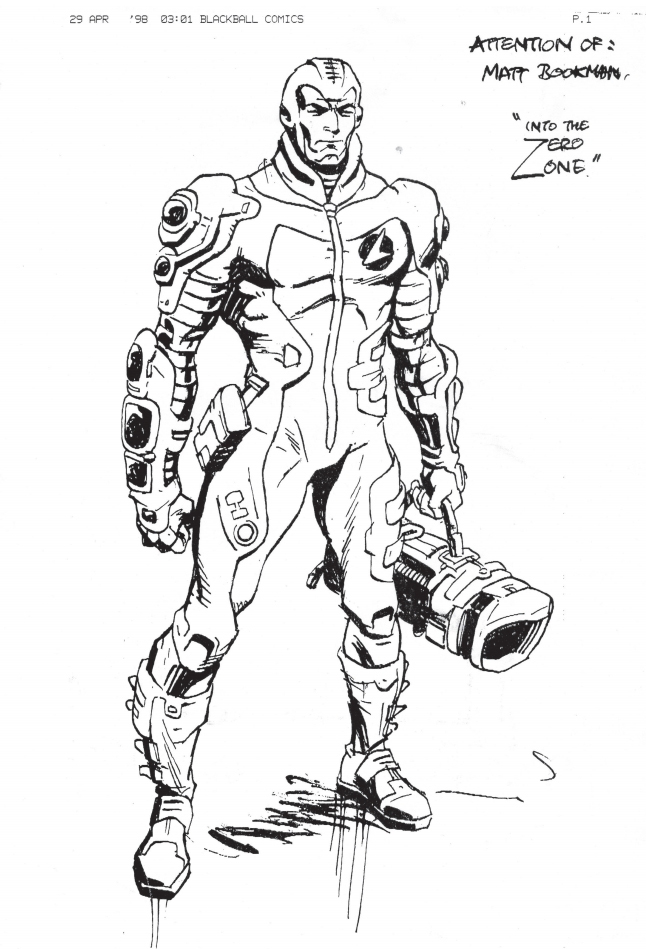
Whereas Lee and David had kept me updated with their progress, sending faxes of their roughs and their pencils, Garry appeared to go to ground. Either he would pick up the phone, promising me work soon, or the phone would ring and ring. It should be noted, however, that Garry had a regular gig at this point, inking John McCrea’s pencils for DC Comics Hitman. and this would always take precedence over a one-off job for me. But one day, Garry’s script arrived by fax, along with some partly pencilled art.
Lee delivered his artwork in person, and David posted his. When I got the artwork, I took them to Stuart, who seemed to be pleased with them, but enquired as to the progress of “Zero Zone”, which made me uncomfortable.
When the strips had been commissioned, I’d also been trying to make up some dummy content of my own, by writing and designing feature content which included redesigning an existing Radio Times‘ The X-Files article, a behind the scenes article on the Doctor Who strip and a spread of SF based news.
All BBC magazines included a page with an Editor’s letter with a photo of them. In an attempt to ensure I did get the editorship, I included my own Editor’s letter and photo on the contents page of the dummy.
Eventually, I’d written/ designed nine feature pages and all three strips had been drawn, and lettered on acetate overlays. Whereas the other two strips had started at the beginning, the sample “Zero Zone” strip was all-action and was mid story. It seemed much more like a war story than I’d anticipated, full of Garry’s trademark beautiful women, with one panel a Dare-like head shot, in a blue wash of colour. This wasn’t exactly what I’d envisioned, but it certainly looked spectacular!
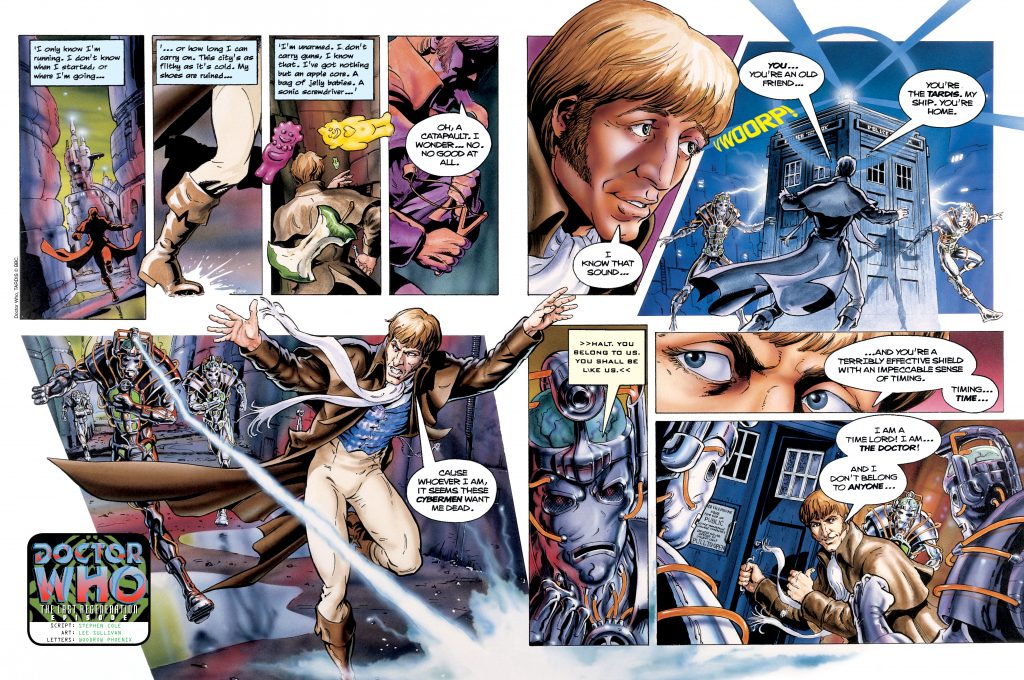

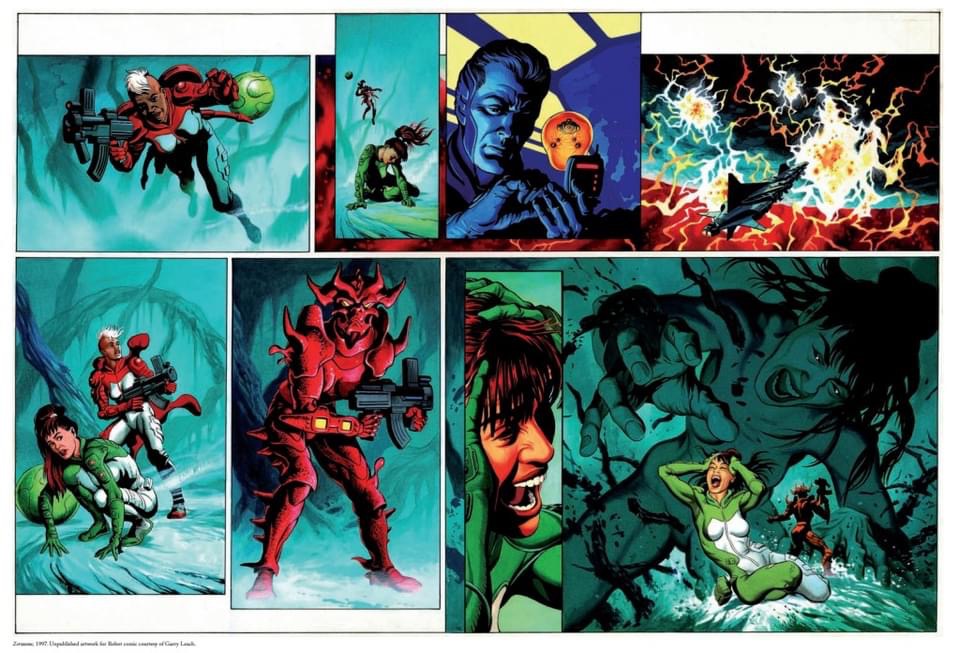
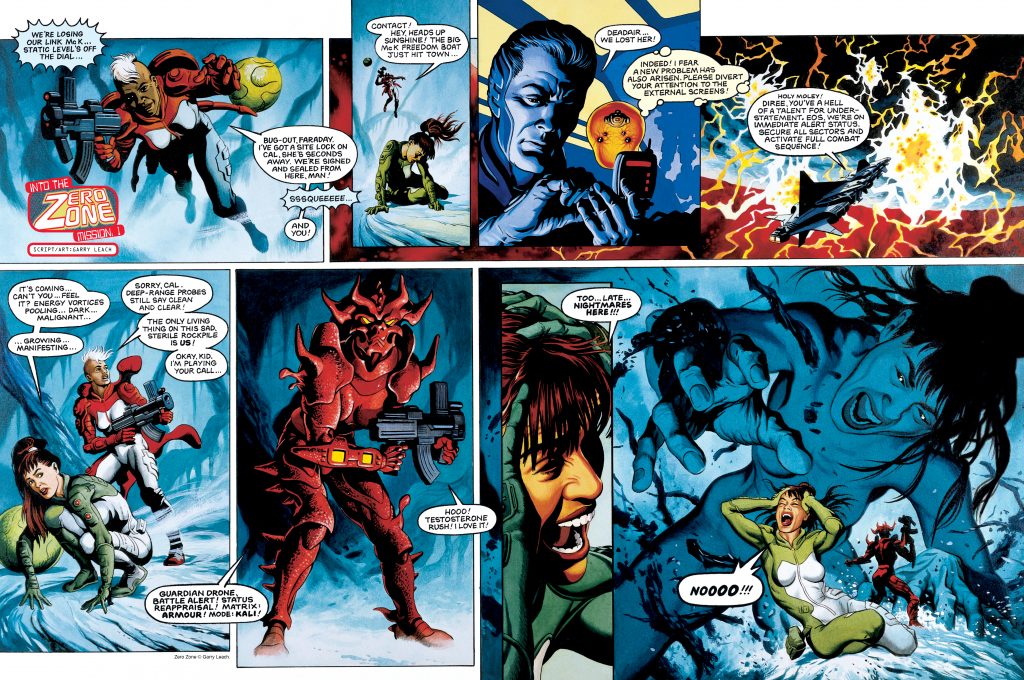
At the next meeting, Stuart thought that there was nearly enough material to progress to print a dummy and have it market tested. He suggested blowing up a panel of a Cyberman from Lee’s strip as the cover image. Instead, I persuaded him to pay for new artwork for the cover, and even though Garry had given me kittens with his late delivery of the “Zero Zone” strip, he was still my star artist and it was him I wanted to create a cover painting.
Stuart had also decided the name The Sci-Files was passé – and I had to come up with a new title and logo. I had seen various photos from the set of the upcoming Lost in Space reboot movie and had really been taken with the look of the updated robot.
I decided Garry would get to paint it for the cover image, and Robot would replace The Sci-Files as our title. But Stuart still liked the idea of a Cyberman cover and so I did two cover designs, one with Garry’s art and one with Lee’s.
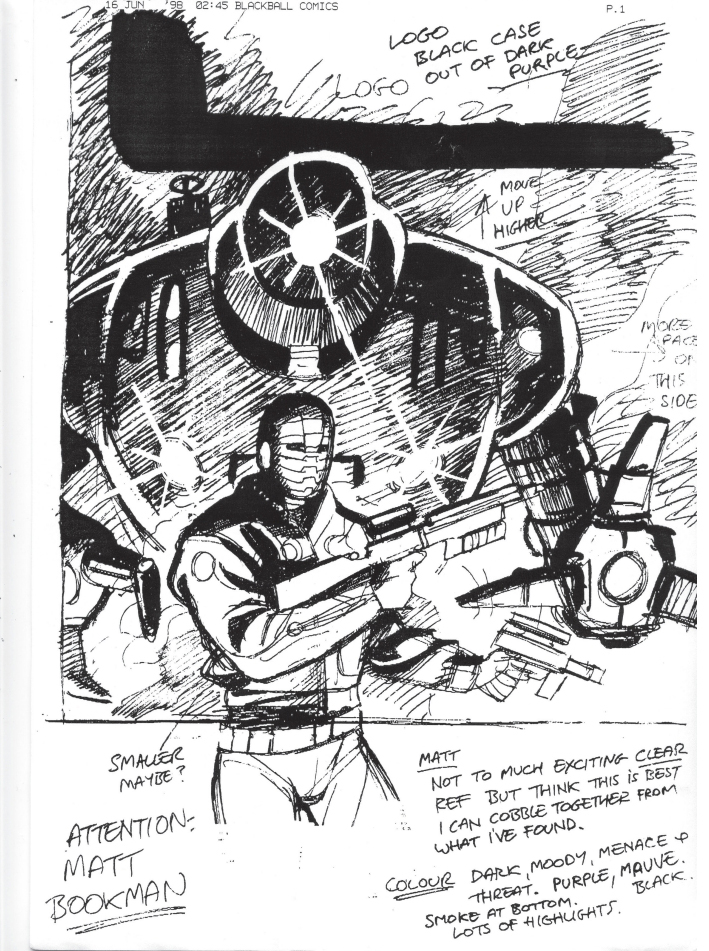
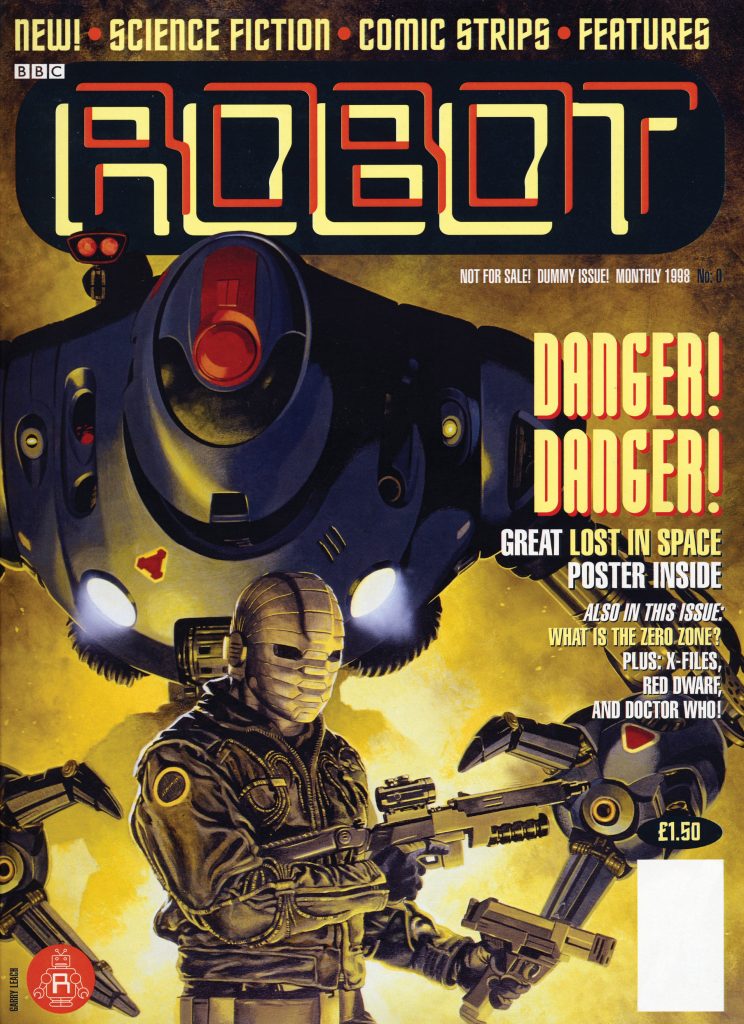
I was also asked to think about who would be suitable to advertise in Robot and collected a few existing adverts for Playstation games, BBC Books , videos and audiobooks, the Lost in Space movie and even the latest Beastie Boys album.
Luckily, I didn’t have to wait as long for Garry’s cover art as I had for the strip, a full-on painting done in acrylics. It was mean, moody and very atmospheric. I was very pleased with it, but when I took it to Stuart, he again seemed less impressed, which I couldn’t get my head around.
However, he did decide that it was time to get a dummy printed up and that even though there was only enough material to fill 13 pages, it could be repeated and the adverts I’d collected could be scanned in too. Garry’s cover even doubled up as a pull-out poster, too!
Because the boards had been commissioned at such a huge size, transparencies had to be made and the lettering acetates composited in Photoshop.
Eventually, Stuart signed off on the dummy and I went to the production department and chose the best paper stock available and they printed 250 copies. Lee’s Cyberman cover was also printed up as a single sheet, with an even smaller print run. (I’d tried to interest Stuart in a flip cover format, but he thought it confusing).

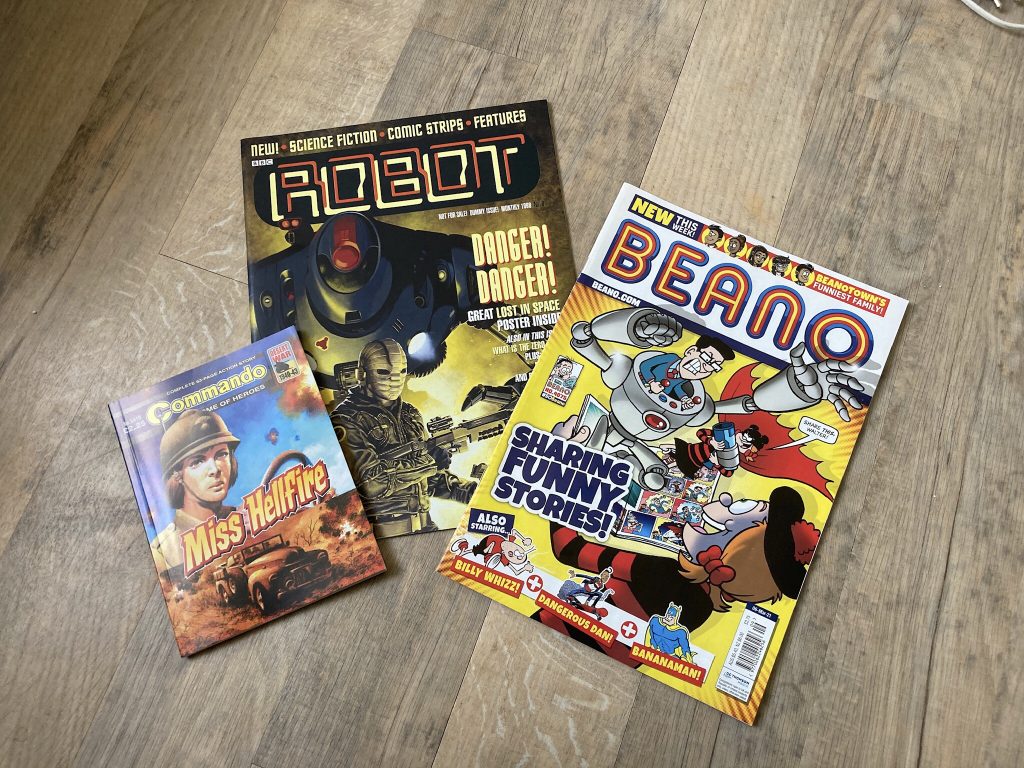
Copies were given to a marketing agency who had to research and focus group test the dummy. In October, four tests took place in London and Manchester, and those being tested ranged in age from 13-30 years of age.
I went to one of the final testings, along with a guy from the marketing agency. We shared a cab from central London, north to Cockfosters where the testing was going to happen. On the way, he told me that although his full time job was in marketing, he also wrote comics too in his spare time – and had asked to be assigned this project as he loved comics.
That was a good sign, I thought – but, unfortunately, as our cab ride continued, he proceeded to gently lower my expectations. as the results that they had been getting so far were not encouraging.
This testing took place in a suburban house. The couple who owned it made refreshments and their teenage son and his friends became the testers.
I explained what the concept of Robot was. Copies of the dummy were handed out and the testers questioned, but it wasn’t a great feeling being there. I don’t really remember any of the specific questions and answers. What I do remember was the negativity that seemed to pour from the focus group, who didn’t seem to like anything that they looked at. I took the tube home, knowing that the project was most likely doomed – and had a sudden dislike of focus groups!
The following month, the marketing agency held a presentation at BBC Worldwide with their findings. Among them, were that computer games, films and TV were now way more popular than print within the target audience, in any form; that The Sci-Fi Channel and Sky were more popular than BBC; and that Sky should publish the magazine, not the BBC!
The written report that was handed out at the meeting contains some quotes from those who participated in the test. Here are a few choice ones:
“It would be ‘Oh my God, look at him buying Robot…”
“If I picked that up, I’d think it were a comic.”
“For kids.”
“It looks a bit like a sticker book.”
“It’s too mixed up – young and old stuff. What age is it meant to be aimed at?”
“Doctor Who? That’s gone now – it’s too old.”
“If it had South Park and The Simpsons in it, it’d be great.”
The presentation lasted for two and a half hours. It was torture, and although it was agreed by the end that science fiction was more popular than ever, comics were “dead”, anthologies were “dead”, Doctor Who was “dead”, although Red Dwarf was very popular; and kids get their thrills from FHM, not comics. The name Robot was also almost universally despised by most of the focus group.
In response, the suggestions from the market research were that instead of Robot, the BBC should create a magazine like Uncut or Empire with an SF theme without any comic strip content… which I pointed out already existed, as Future’s SFX magazine.
Another suggestion was to create a science fiction-based TV listings magazine, concentrating on digital and satellite TV, which was not really something BBC Worldwide would have agreed to.
A dedicated Red Dwarf publication was also mooted, suggesting it could have a niche but loyal readership. (Fleetway had already tried this, but I think the suggestion was that this would definitely be feature led, rather than carry comic strips.)
I followed the focus group findings with one further report to Stuart. Suggesting two approaches. The first, to take seriously the idea of an SF-based listings magazine; the second, to use the existing dummy, tweak it, rename it and test it to 10-year-olds who wouldn’t feel that it condescended to them. This was an acknowledgement that maybe I’d been too hopeful that we could appeal to a wide age range.
I also suggested more comic strips based on Robot Wars and Batman Beyond, the latter which had yet to air in the UK.
“The concept that Steve Cole and myself had of updating and revamping Doctor Who is an exciting and viable concept,” I argued. “This radical overhaul could be promoted by the newspapers that love to run Who stories, if they had access to visuals showing them the new Doctor, Daleks, Cybermen etc.. The comic strip may also persuade BBC TV to make new episodes based on our updated version!”
This made Stuart smile and he told me in no uncertain terms that he could see no future for Doctor Who, other than the marketing of the books and videos to an ageing and dwindling fanbase.
Robot then came to an abrupt end. There would be no further work done.
I phoned all three artists to tell them the news. I sent their art back, including a copy of the printed dummy and a transparency of the spread they had worked on. It was all over.
I did ask Stuart if I could take the dummy and research to another publishing house. He gave me an emphatic no. BBC Worldwide had paid for the comic art, the printing of the dummy and the market research. There would be no resurrection.
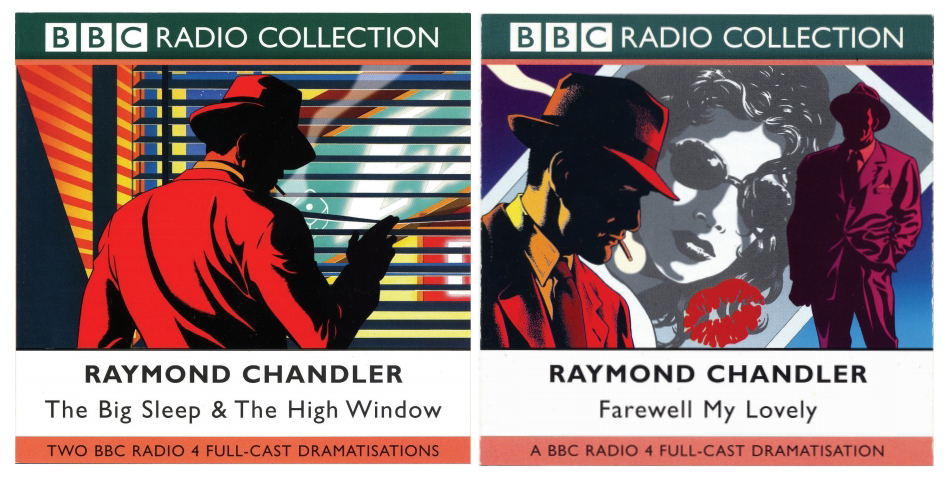

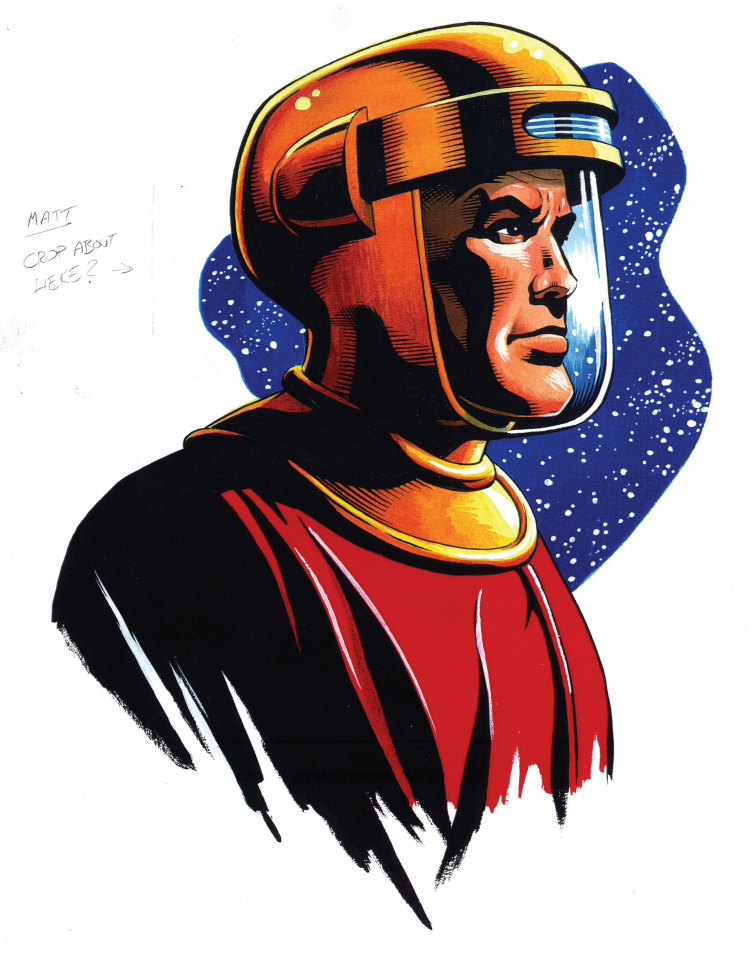
I continued at Radio Times for a further year, but I was ready to leave by then. Eventually, I became aware that the audiobooks department upstairs needed a Design Editor and I applied for the job. Nick Brett vouched for me and I spent four years working there , commissioning more work from Garry Leach, David Lloyd, Rian Hughes and Lee Sullivan among others. Then, when the audio department moved to Bath, I left to go freelance in 2003.
I’m still convinced that Robot could have been a success and I have been suspicious of focus groups ever since. My love of comics is as strong as ever!
Matt Bookman
Matt Bookman is a freelance graphic designer with a varied background in magazine publishing – including TV, music, women’s and photography titles – as well as CD and book covers and marketing materials. Recent clients include the Chelsea Magazine Company, Cedar Communications, TI Media, Penguin Random House and BBC Audio. A lifelong comic book fan, his favourite creators include Jack Kirby, Serge Clerc, Yves Chaland, Frank Hampson and Mike Allred.
• Examples of Matt’s work can be found at mattbookman.carbonmade.com
• Read Part One of Matt’s two-part feature on The Sci-Files and ROBOT here
WEB LINKS
DOCTOR WHO STRIP CONNECTIONS
• Article about letterer Elitta Fell
• Garry Russell – on Twitter (writer of the Radio Times “Doctor Who” strip)
– Lee Sullivan – Official Web Site
RED DWARF STRIP CONNECTIONS
ZERO ZONE STRIP CONNECTIONS
• Garry Leach – Bulldog Arts | Atomeka Press on Facebook
• Woodrow Phoenix – Official Site
The founder of downthetubes, which he established in 1998. John works as a comics and magazine editor, writer, and on promotional work for the Lakes International Comic Art Festival. He is currently editor of Star Trek Explorer, published by Titan – his third tour of duty on the title originally titled Star Trek Magazine.
Working in British comics publishing since the 1980s, his credits include editor of titles such as Doctor Who Magazine, Babylon 5 Magazine, and more. He also edited the comics anthology STRIP Magazine and edited several audio comics for ROK Comics. He has also edited several comic collections, including volumes of “Charley’s War” and “Dan Dare”.
He’s the writer of “Pilgrim: Secrets and Lies” for B7 Comics; “Crucible”, a creator-owned project with 2000AD artist Smuzz; and “Death Duty” and “Skow Dogs” with Dave Hailwood.
Categories: Creating Comics, Doctor Who, downthetubes Comics News, downthetubes News, Features
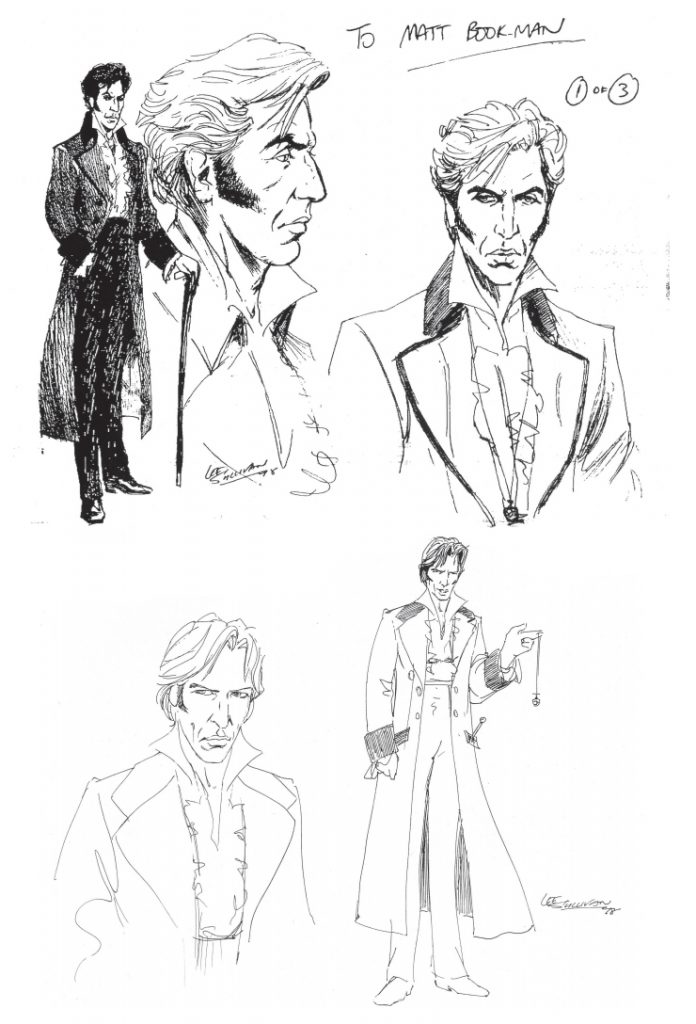
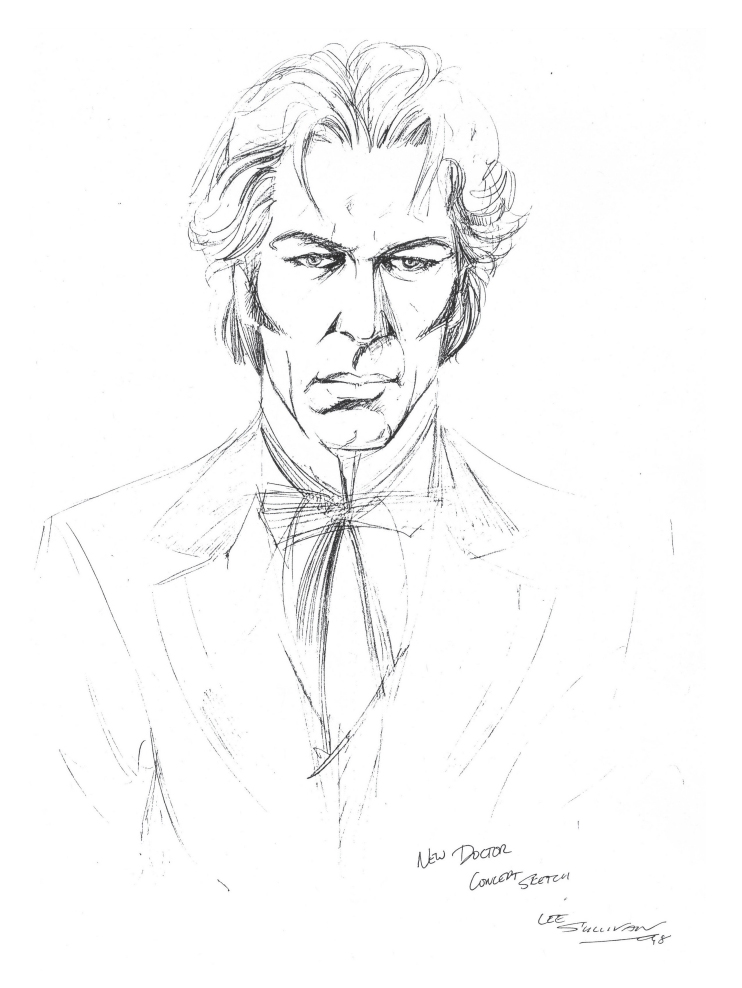
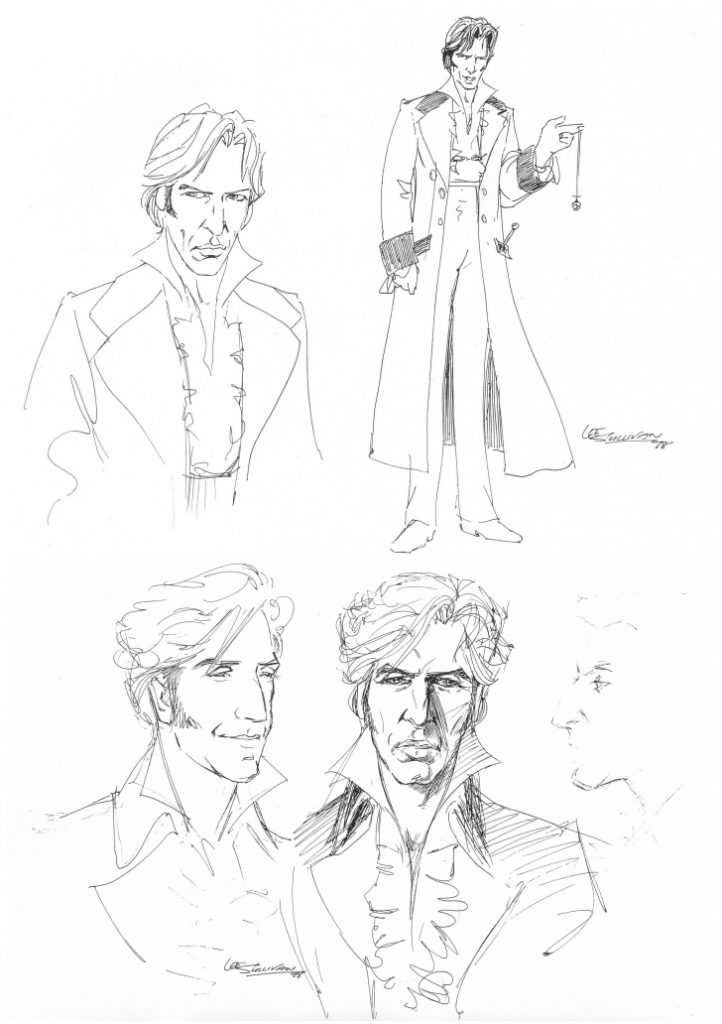
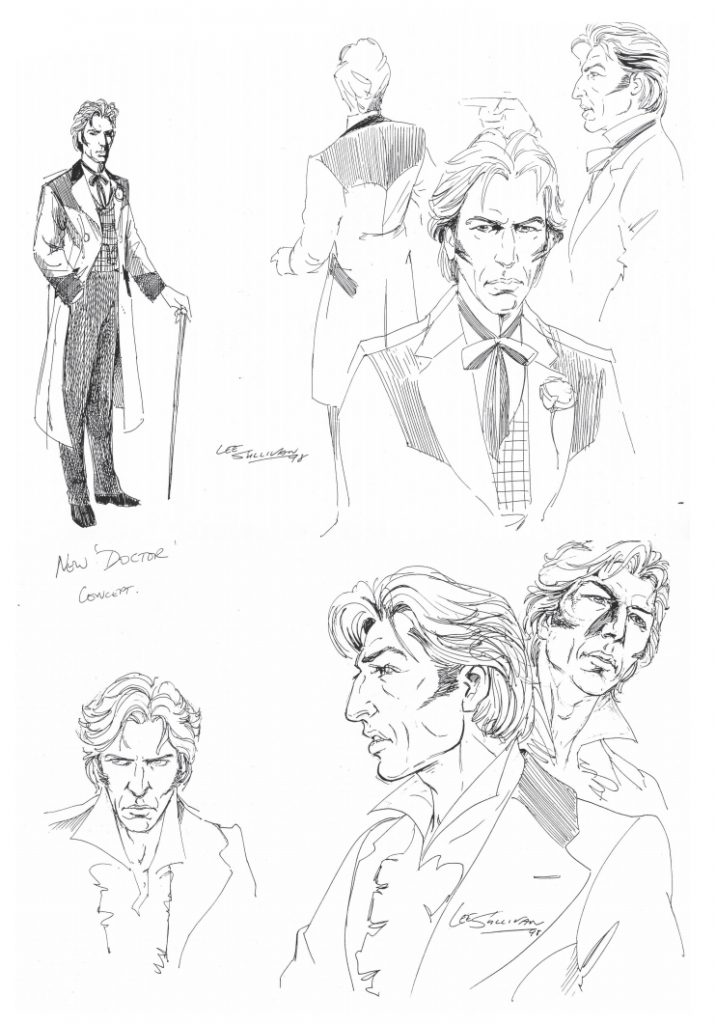
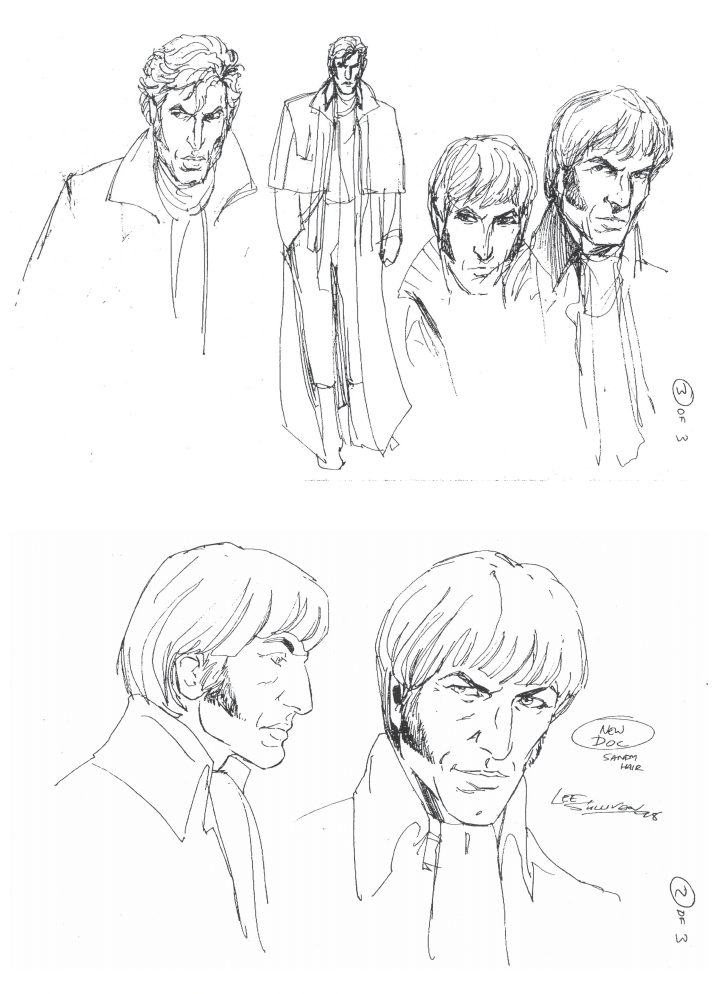
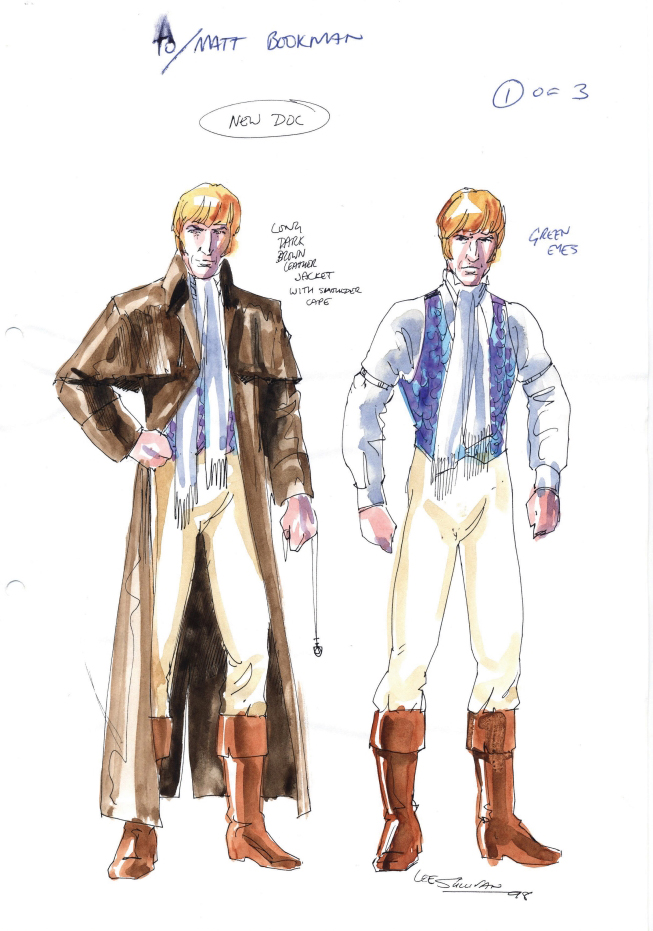

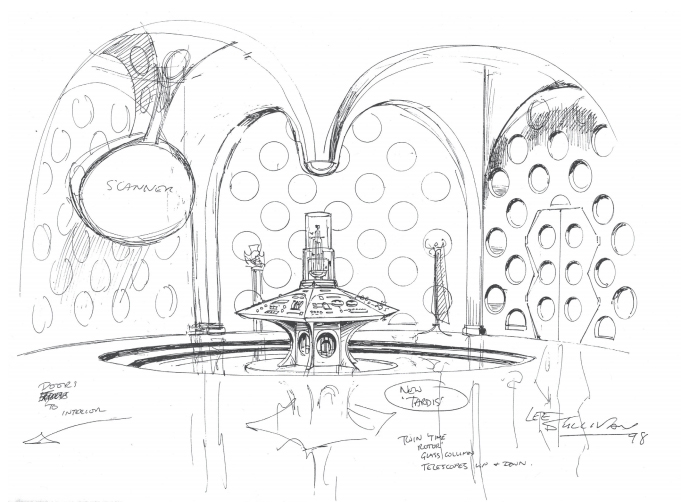

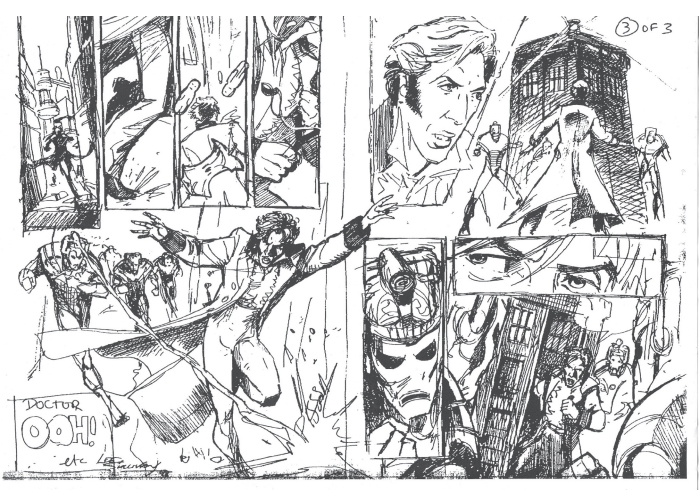
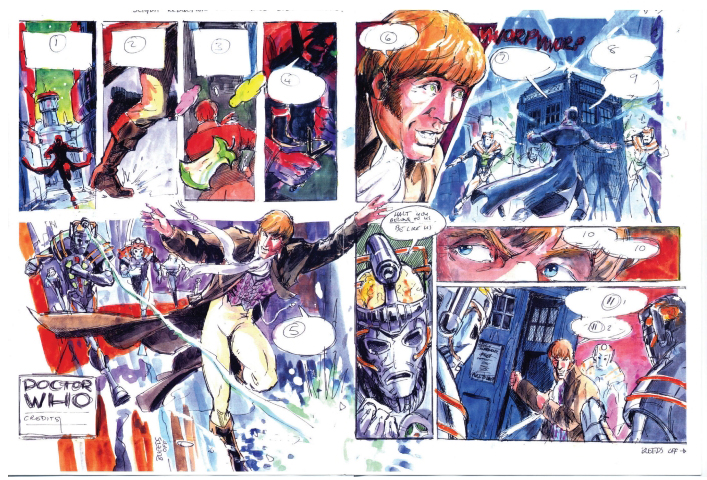

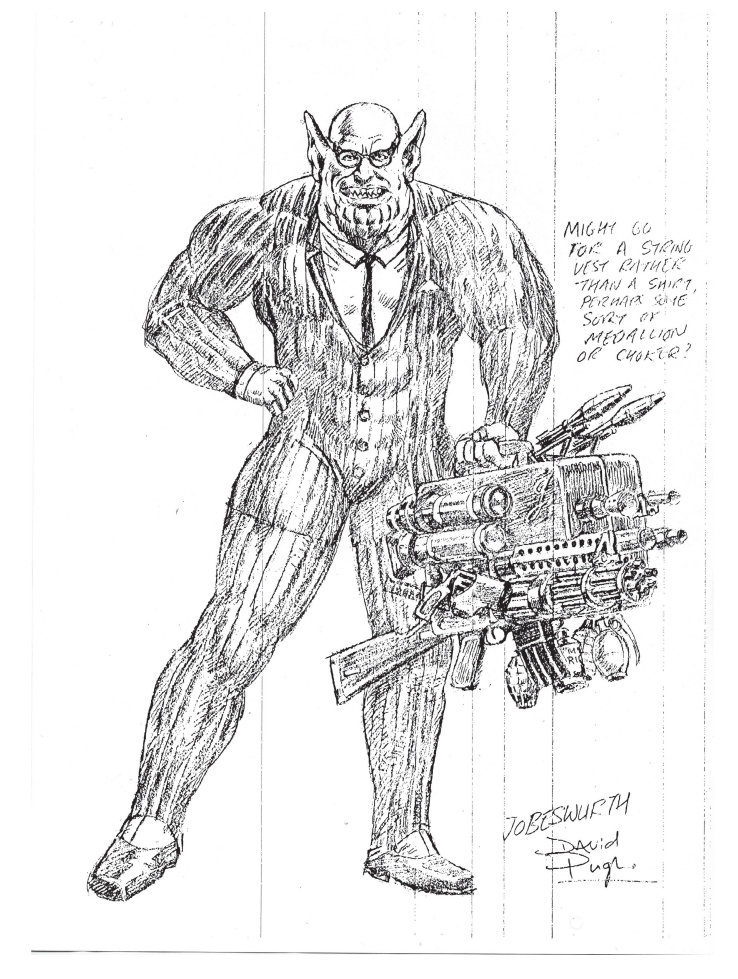
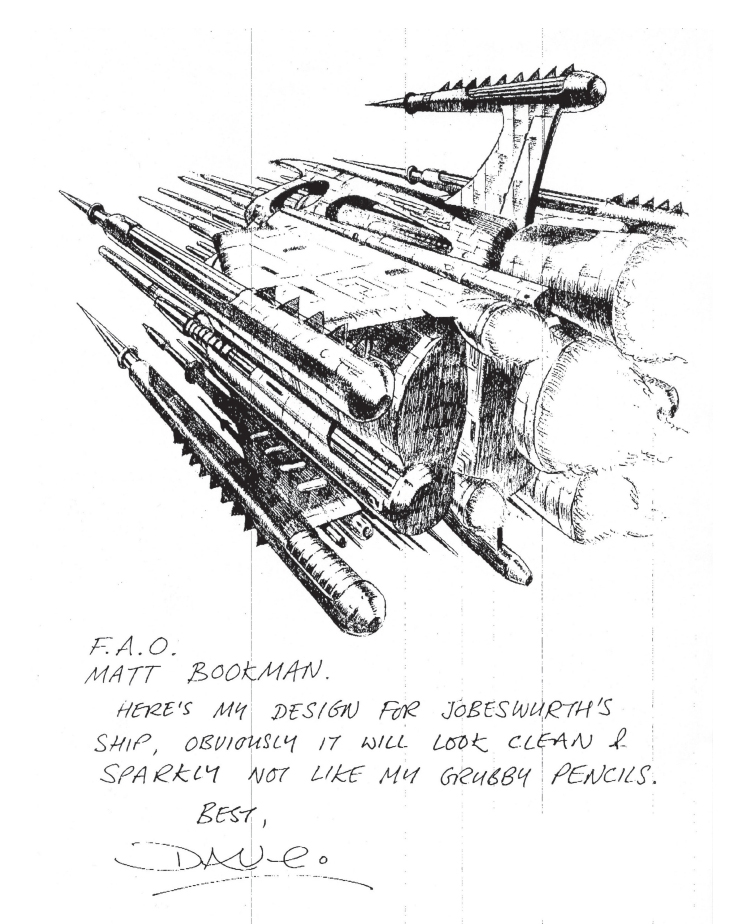


 Creating Comics: Cutaway Comics explores the greater Doctor Who universe
Creating Comics: Cutaway Comics explores the greater Doctor Who universe  Coming Soon: Doctor Who – Terror from the Deep
Coming Soon: Doctor Who – Terror from the Deep  British Comics That Never Were – BBC Worldwide’s “ROBOT” Project – Part One
British Comics That Never Were – BBC Worldwide’s “ROBOT” Project – Part One  Creating Comics: Behind the Scenes on Cutaway Comics “Omega” with artist John Ridgway
Creating Comics: Behind the Scenes on Cutaway Comics “Omega” with artist John Ridgway
Well, I’d have bought it. Definitely preferred the title ‘Sci-Files’ to ‘Robot’, which seems to me to suggest stories would feature, well, just robots. That would have put me off. Otherwise, a sound plan I think, Matt, and well done for trying. Shame it never saw the light.